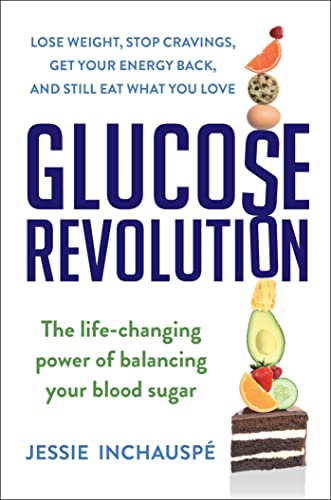So often, we focus on what and what not to eat. But what about how to eat? It turns out that how we eat our food has a powerful effect on our glucose levels.
Two meals consisting of the same foods (and therefore the same nutrients and the same calories) can have vastly different impacts on our body depending on how their components are eaten. I was taken aback when I read the scientific papers that proved this, notably a seminal one out of Cornell University in 2015: if you eat the items of a meal containing starch, fiber, sugar, protein, and fat in a specific order, you reduce your overall glucose spike by 73 percent, as well as your insulin spike by 48 percent. This is true for anyone, with or without diabetes.
What is the right order? It’s fiber first, protein and fat second, starches and sugars last. According to the researchers, the effect of this sequencing is comparable to the effects of diabetes medications that are prescribed to diabetics to lower their glucose spikes. A startling study from 2016 proved the finding even more definitively: two groups of type 2 diabetics were given a standardized diet for eight weeks and asked to either eat their food in the right order or eat it however they pleased. The group who ate their food in the right order saw a significant reduction in their HbA1c level, which means they started reversing their type 2 diabetes. The other group, eating the exact same food and number of calories but in no particular order, didn’t see an improvement in their condition.
Talk about a groundbreaking discovery.
The explanation for this surprising effect has to do with how our digestive system works. In order to visualize it, think of your stomach as a sink and your small intestine as the pipe below it.
Anything you eat lands in your sink, then flows through to your pipe, where it is broken down and absorbed into your bloodstream. Every minute, on average, about three calories’ worth of food trickles through from sink to pipe. (This process is called gastric emptying.)
If starches or sugars are the first thing to hit your stomach, they get to your small intestine very quickly. There, they are broken down into glucose molecules, which then make it through to the bloodstream very quickly. That creates a glucose spike. The more carbs you eat and the quicker you eat them, the more forcefully the load of glucose appears—the bigger the glucose spike.
Say you have both pasta and vegetables on your plate (broccoli, anyone? I love broccoli) and you eat the pasta first, then the broccoli. The pasta, which is a starch, turns into glucose as it is quickly digested. The broccoli then “sits” on top of the pasta and waits its turn to go through the pipe.
On the other hand, consuming the veggies first and the carbs second significantly changes what happens.
Begin by munching on the broccoli. Broccoli is a vegetable, and vegetables contain plenty of fiber. As we’ve seen, fiber isn’t broken down into glucose by our digestive system. Instead, it goes through from sink to pipe to . . . sewage, slowly and unchanged.
But that’s not all.
Fiber has three superpowers: First, it reduces the action of alphaamylase, the enzyme that breaks starch down into glucose molecules. Second, it slows down gastric emptying: when fiber is present, food trickles from sink to pipe more slowly. Finally, it creates a viscous mesh in the small intestine; this mesh makes it harder for glucose to make it through to the bloodstream. Through these mechanisms, fiber slows down the breakdown and absorption of any glucose that lands in the sink after it; the result is that fiber flattens our glucose curves.
Any starch or sugar that we eat after fiber will have a reduced effect on our body. We’ll get the same pleasure from eating it but with fewer consequences.
That’s carbs and vegetables. Now enter protein and fat. Protein is found in meat, fish, eggs, dairy, nuts, beans, and legumes. Foods that contain protein often contain fat, too, and fat is also found on its own in foods such as butter, oils, and avocados. (Incidentally, there are good and bad fats, and the bad fat that we should avoid is found in hydrogenated and refined cooking oils such as canola, corn, cottonseed, soybean, safflower, sunflower, grapeseed, and rice bran oil.) Foods containing fat also slow down gastric emptying, so eating them before rather than after carbs also helps flatten our glucose curves. The takeaway? Eating carbs after everything else is the best move.
To illustrate the effect of food order on glucose spikes, return to the Tetris analogy: blocks coming down slowly are easier to arrange than blocks coming down quickly. When we eat foods in the right order—veggies first, protein and fats second, carbs last—not only do we slow down the speed of the blocks, we even cut down on the quantity of blocks thanks to the mesh that fiber adds to our intestine.
The slower the trickling of glucose into our bloodstream, the flatter our glucose curves and the better we feel. We can eat exactly the same thing—but by eating carbs last, we make a big difference in our physical and mental well-being.
What’s more, when we eat foods in the right order, our pancreas produces less insulin. Less insulin helps us return to fat-burning mode more quickly, the positive results of which are many—and include losing weight.



